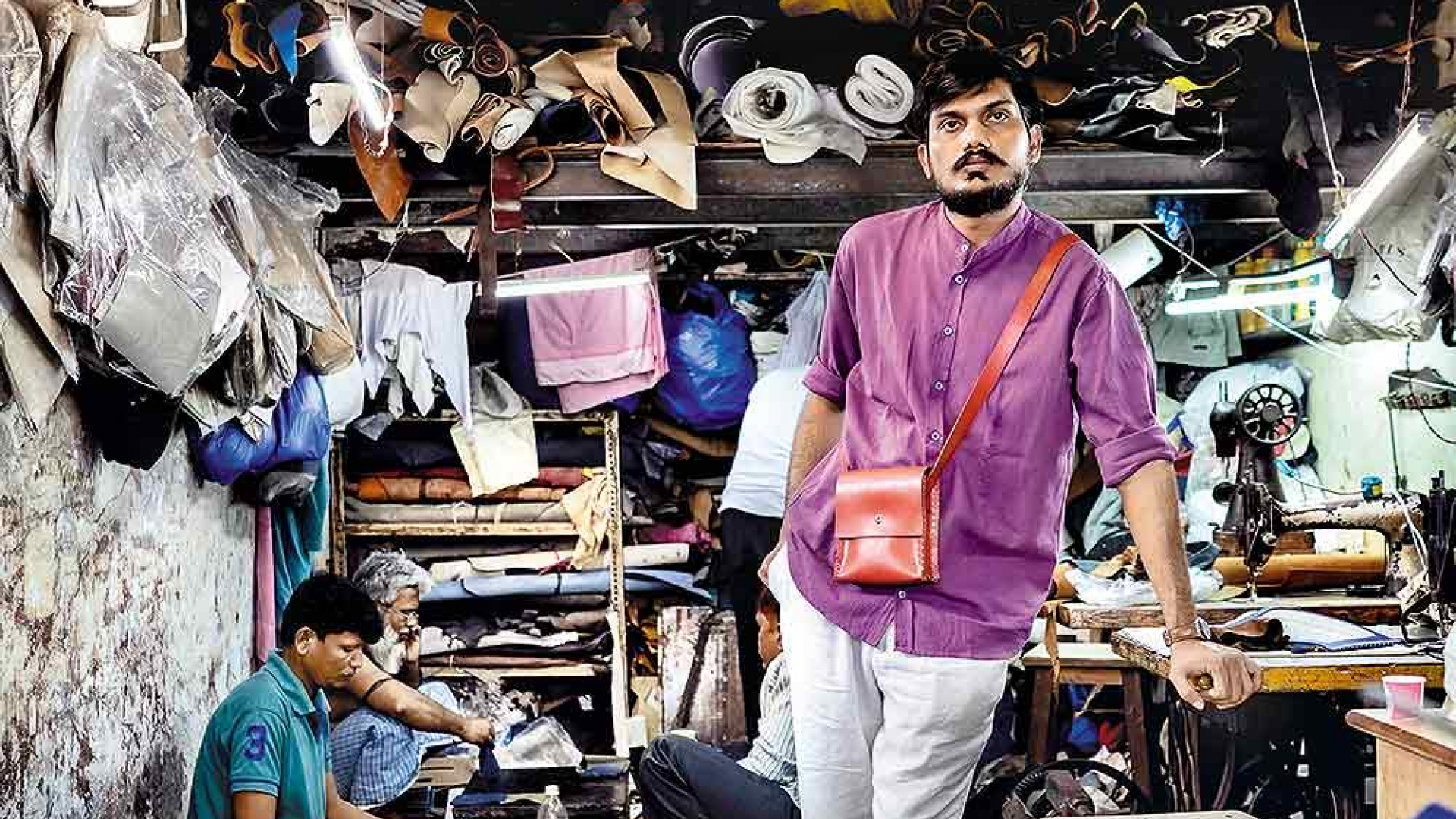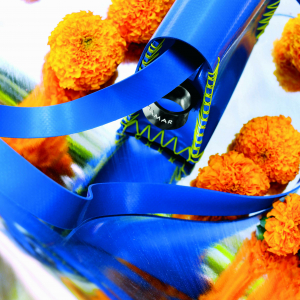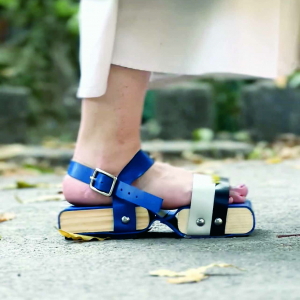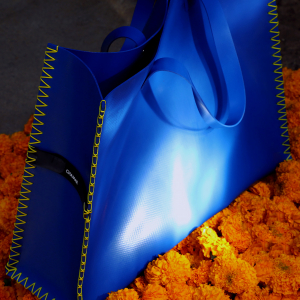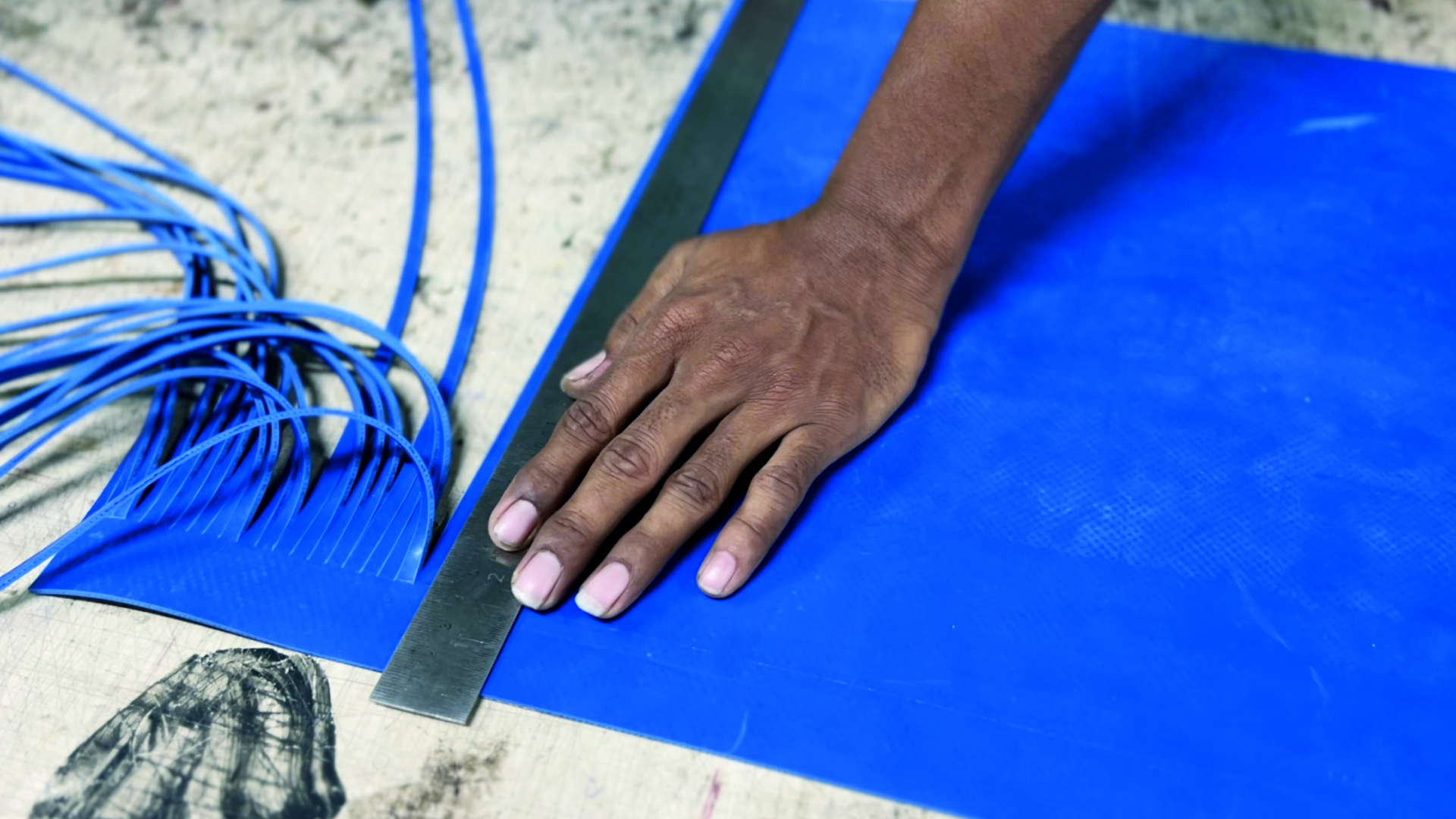An interview with Sudheer Rajbhar of Chamar Studio, Mumbai, India
Artist and fashion designer Sudheer Rajbhar of Mumbai is pushing the boundaries of his medium and materials by subverting caste stereotypes in India while developing luxury goods that eschew leather by using recycled material. “Chamar,” a caste-based slur, has historically been applied to craftsmen working in the tanning and leather industries. Rajbhar’s brand Chamar takes on the term to disrupt and disestablish the social hierarchy. He has partnered with Dalit and Muslim leather workers in Dharavi (a large disadvantaged neighbourhood in Mumbai), shattering historical conventions that have tied these artisans to denigration and poverty. India’s beef ban (prohibiting people in most of its 28 states from working with leather) compounds the precarity faced by those employed in the leather goods industry. By replacing leather with recycled tire innertubes, creating high-end handbags and shoes, and embracing the name Chamar for a luxury brand, the design group seeks to claim this inimitable Indian craft for its actual makers. Here, Rajbhar lays out the vision and goals for the Chamar brand.
Rajbhar, in partnership with Sajdeep Soomal, PhD candidate at the University of Toronto, is the recipient of ROM’s 2021–22 IARTS Textiles of India Grant.
Your project is as much social change as design and medium change. You are actively embracing the term Chamar?
Leather artisans, they have a stamp on their head: Chamar. It means leather and people working with dead animals from generation to generation, Muslim and Dalit people. They are lower caste people, and India is still conservative in these matters. I started this as a public art project. I printed small bags, with “Chamar” written in all the languages of India and the world. I wore a bag on my shoulder and went from village to village, and people asked me, “why are you doing this?” And I told them about our project. And the artisans, they felt proud, saying, “We’re going to be like a brand and people will recognize our craftsmanship. We can be the same as Gucci.” So, yes, there can be social change.
How did you start working with traditional leather workers in Dharavi? And your work to find a new medium?
I curated an exhibition called We are here because you are there (Clark House, 2018). Through this show, I wanted to question the authenticity in the artist-artisan relationships: when the artists make work, they rely on assistants, but there is no credit for the assistants. And then I started working with leather artisans in Dharavi. In 2015 came the beef ban, and they could no longer have access to leather, and so there was no employment. So I entered into conversation with them, to find a way to change the medium. In 2018, I found a replacement for leather —something sustainable, without harmful chemicals. We sourced tire innertubes from Dharavi, which is a huge recycling hub, and converted them into powder, and mixed the powder with pigment and natural rubber to create sheets. We have been working with the French textile designer Camille Bastien to weave strips of the rubber material into bags. Next, we will make shoes. By changing the medium to rubber, we can change people’s thinking. They can see it’s sustainable and it’s vegan. The leather itself was a problem for consumers, for younger generations, who are ready to wear Chamar brand if it’s made of rubber, not leather.
Tell us more about this idea of Chamar as a luxury brand.
You say the word Chamar in the West and people connect it with Chanel, which is luxury. We use the word as a resistance to discrimination. The caste system in India divides labour, where artisanal work—blacksmithing, leather work, tailoring, haircutting, etc.—are all seen as polluting, untouchable professions. These essential services are discriminated against for their meniality. Why can’t Indian craftsmanship be like Chanel? So I decided, okay, let’s use this name Chamar as an identity, as a brand, to make visible those who have never had recognition, who were never recognized by anyone, zero. There is a movement in western Uttar Pradesh that is drawn from self-respect, where Chamars from the Jatav community use Chamar as a term of pride on cars, homes, and social media. Our Indian craftsmanship should be known worldwide as a luxury brand.
How will the IARTS grant help the group and this vision?
We are a small studio, and we don’t have enough funding to buy the things we need: pigments or small pieces of equipment and material to do our [rubber] experiments. And in terms of sharing our knowledge, this is really a good platform to reach a wider audience. Sajdeep Soomal and I will interview the artisans and put their voices on the Chamar Foundation website. We plan to have design incubators to educate and promote creative practices where design, conceptual thought, and branding add to value creation. Artisans should innovate and understand their authorship and the value of their creativity. The grant will help our reach at the grassroots level. I learned from the older artisans in Dharavi that many worked in the past for Gucci and other international brands, which came as a shock to me. Then, they [the artisans] started copying their designs, because they have no training or understanding of contemporary design. Learning about design and branding can be really useful for [the artisans], to grow their business, to break the chain so they can experiment and master design, and not simply copy. That is a healthy future.
I love that expression, “healthy future.”
Gandhi brought an association of value, cleanliness, and sustainability to khadi [Indian handwoven cotton cloth]. The design incubators can help former leather artisans appreciate the value of careful work, making well-finished, perfect things. Most have always worked in very dirty conditions; but the idea and practice of clean hands and high quality can happen in the incubator. We also want them to be away from toxic chemicals [used in leather tanning] and exploitative production methods, and be remunerated adequately for the work so that they are not forced to work in unhealthy or oppressive conditions. Self-respect that annihilates the question of caste oppression in their work can change lives and bring dignity and confidence.
Speaking of futures, what are your future dreams or vision for Chamar?
Here in India, you can see [leather workers] sitting on the street, on the pavement, on the roadside, repairing shoes. They have no workspace or shops, nowhere to receive customers. So we are opening a small space in Colaba [an upscale shopping and tourist district in Mumbai], in Clark House, where we can sell products. My dream is a showroom. But that needs funding, a huge investment. It’s not for now, but in the future definitely—a cooperative, small-scale business with constituents as stakeholders. In Rajasthan, we are restoring a haveli [a historic house], which in the past only the upper caste could own and live in. Chamar people, they made the havelis, the beautiful frescoes, but they could not live in the houses. And they got no recognition. So we are calling it “Haveli Chamar.” We made Chamar Studio [in Mumbai] an open playground, where artisans, designers, anyone can come collaborate and make their work. Haveli Chamar will also welcome artists and designers from everywhere to work with the artisans of Rajasthan, because Rajasthan has a very, very rich craft tradition, in textiles and leather. Chamar uses luxury, a market that is both pretentious and rare, as a path to erase [employment] precariousness and decolonize artisanship from the realm of luxury consumption as seen, and controlled, by mainland western Europe.
As part of the programming of the IARTS Textiles of India Grant, Sudheer Rajbhar is invited to Toronto to present the results of the Chamar team in 2023.

